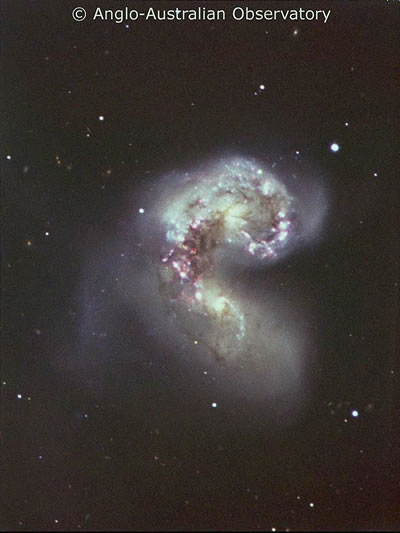Starburst Galaxy
Starburst galaxies are galaxies that are observed to be forming stars at an unusually fast rate (about 103 times greater than in a normal galaxy). At these high levels of star formation it is estimated that the supply of gas and dust within the galaxy would be exhausted within about 108 years, meaning that these episodes of intense star formation must have started relatively recently and will end in the not too distant future.
The areas of high activity can be spread throughout the galaxy, but most starbursts are observed in a small region around the nucleus. Although the mechanism is still poorly understood, it is thought that the star formation is triggered by tidal interactions between galaxies passing close to one another (one of the most famous examples is the Antennae galaxies), galaxy mergers, or due to the presence of a galactic bar, all of which result in the accumulation of substantial amounts of gas and dust in the central regions of the galaxy.
Although hidden from us at optical wavelengths by the enshrouding dust, massive stars are formed out of the available gas. They emit copious amounts of ultraviolet wavelengths which is absorbed by the surrounding dust and reemitted at infrared wavelengths, making starburst galaxies among the most luminous infrared objects in the Universe. Ironically, it is the rapid rate of star formation that ultimately terminates the period of starburst. Supernova explosions and stellar winds from the newly formed massive stars can be sufficient to sweep the gas from the galaxy thereby halting all further star formation.
Starburst galaxies have also been observed in the early universe and appear to be more prevalent than they are now. These galaxies located about 12 billion light years distant, appear to have the same characteristics as the nearby starbursts and indicate that galaxy interactions were much more common in the past.
Study Astronomy Online at Swinburne University
All material is © Swinburne University of Technology except where indicated.


